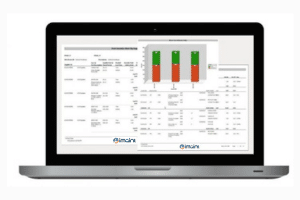Many companies have storerooms or warehouses chocked full of inventory ready to ship directly to customers. In other circumstances, this inventory is dedicated to MRO (maintenance, repair and operations) programs. Read on to learn more about using key performance indicators for spare parts inventory management and measurement.
This excerpt originally appeared on Manufacturing.net, and is authored by DPSI Professional Services Consultant Robert Brieck.
“Key Performance Indicators (KPIs) can play a significant role in managing production departments. Production departments typically report the number of units produced per man-hour worked, or the number of units produced per kilowatt hour. Measuring KPIs such as these allows companies to manage production of those units, thereby controlling cost.
Maintenance departments, however, measure different parameters such as the number of Work Orders in backlog. They may also compare the amount of Preventive Maintenance Work Orders performed versus the number of Emergency Work Orders generated and completed over a given period of time. Maintenance uses these efforts to control their cost and support production departments by keeping assets/equipment in peak operating conditions.
Now, let’s turn to inventory. Inventory used to support MRO programs is managed by maintenance departments. Maintenance should be able to identify and determine necessary items to stock, the quantity of those items and which assets/equipment those items support. This in most cases is not the responsibility of inventory departments.
Failure to properly manage inventory can lead to a significant waste of company dollars. Funds otherwise allocated to important business endeavors may end up being spent on unnecessary spare parts. Overstocking leads to parts simply sitting on shelves for extended periods of time. Ordering the wrong or insufficient parts can result in excessive equipment downtime and a lag in production.
Roll of the Dice
Many inventory departments aim to keep just enough MRO items to support maintenance without overstocking parts. It’s a delicate balancing act in which companies struggle to keep up. Departments may attempt Just in Time (JIT) ordering, a strategy used to decrease waste by receiving items only as they are needed. This method can lead to drastic effects on maintenance and overall production since departments rely on identifying the correct Reorder Point to sustain production lines. Finding the magical point to reorder the correct quantity of low stock items at the correct time so as not to be STOCK OUT during a critical moment is possible, however it can be challenging.
Typical KPIs
There are many KPIs to consider for inventory management, with more and more developing as time goes on. Examples of typical KPIs used by Fortune 500 or Best in Class organizations include:
- Inventory accuracy: Actual count/Computer reported on-hand balance. Acceptable range is greater than 95 percent. Calculate weekly.
- Dollars spent on emergency purchases compared to overall purchases: Emergency dollars spent on purchases/Total dollars spent on all purchases. Acceptable range is less than 2 percent. Calculate monthly.
- Stock outs: Number of occurrences/Total pieces issued. Acceptable range is less than 1 percent. Calculate weekly.
- Days of inventory on hand: Total inventory valuation/Average daily dollars used. Acceptable range is less than 30 days on hand. Calculate monthly.
- Slow-moving parts: Number of parts identified as slow or no movement/ Total parts in inventory. Acceptable range is less than 5 percent of total stock units. Calculate monthly.
- Back orders and vendor performance: Items delivered/Items ordered. Acceptable range is 98 percent. Calculate monthly.
Selecting five meaningful KPIs for your organization is an ideal starting point. It’s best to revisit your company’s mission statement and strategic goals when deciding which KPIs would be most beneficial for your organization. The process of establishing KPIs should be done collectively, with support from all departments before instituting. Most importantly, KPIs should be relevant, measurable and reportable.”




